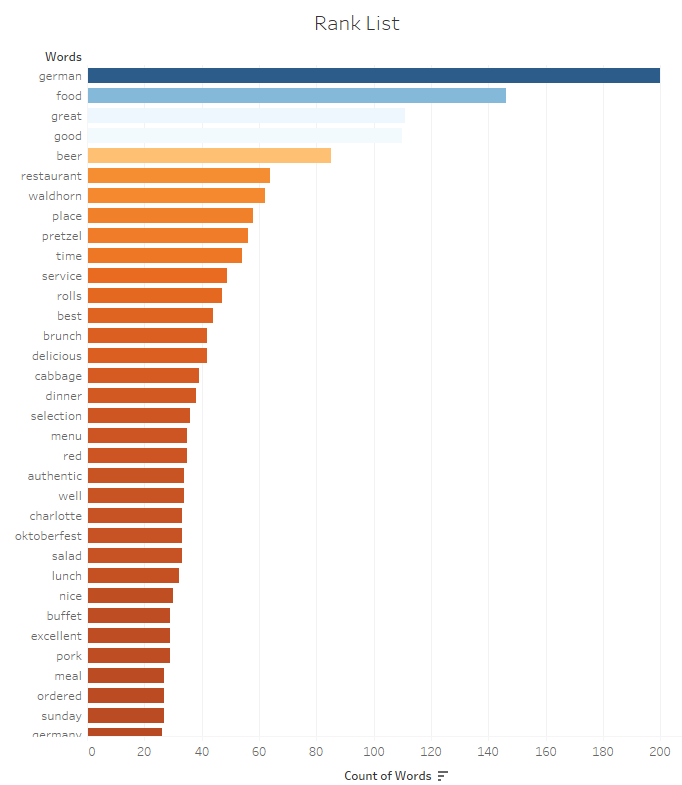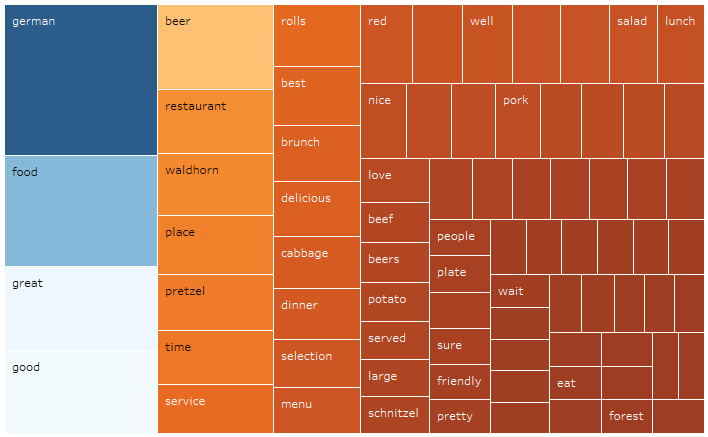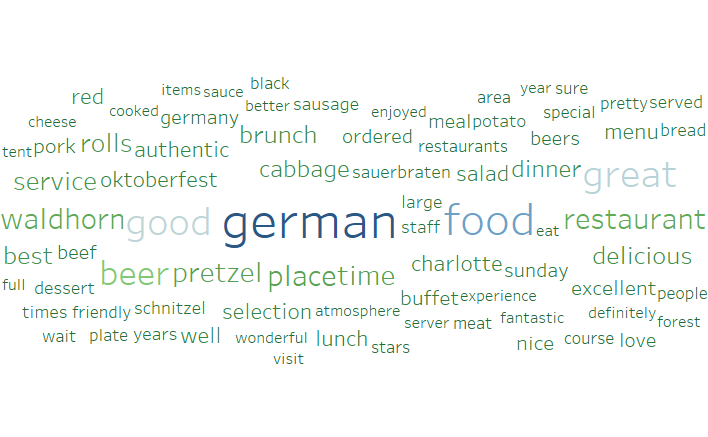After getting my hands on a data set containing a large number of user reviews in a column, I was trying to get an overall sense of those reviews with a quick glance. Visually, there are several options to get that perspective. We can start by words used ranked by use count:

But it takes way too much of the screen real estate. We could also use a nice tree map, which I am found of:

Nice and thorough, with each box sized in proportion of the use count of the word. Unfortunately, the average consumer of such analysis is struggling to interpret it, as this style of viz is probably not mainstream enough yet. It’s still way better than the dreaded pie chart, which is impossible to consume with more than 3 slices.
I figured this analysis could also be a great opportunity to use a Word Cloud, a fairly recent functionality which came with Tableau 8, which I find more accessible to users:

With one quick glance, one can clearly visualize that those reviews cover a German restaurant in Charlotte, NC, with a fairly positive tone.
Soon after I got started putting together the Word Cloud, I realized that Tableau offered little guidance on that topic. Word Cloud is not found in the Show Me tab for instance. I searched what fellow bloggers had to offer, and easily found some guidance, like here or there. These are all fine posts, with nice visual steps to follow, but they overlook a crucial point: they assume that the data set has already 1 word per column, which is highly unlikely to happen. It turns out that using a data source with sentences instead of single word, is a major road block to the use of Word Clouds in Tableau, as reflected in some help requests in the community. In order to feed Tableau with something workable, it requires to split the words of the reviews column. This operation implies breaking the granularity of the data source, which will expand the number of rows by the number of words found in each review.
There must be ways to code that conversion in Python, R, SQL or even PowerBI DAX. But as often for me, for a clean repeatable solution without dreaded copy + paste, whipped together in 10 minutes, I will use Alteryx!

